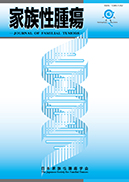Volume 4, Issue 1
Displaying 1-12 of 12 articles from this issue
- |<
- <
- 1
- >
- >|
-
2004 Volume 4 Issue 1 Pages 1-
Published: 2004
Released on J-STAGE: November 29, 2018
Download PDF (68K) -
2004 Volume 4 Issue 1 Pages 2-5
Published: 2004
Released on J-STAGE: November 29, 2018
Download PDF (296K) -
2004 Volume 4 Issue 1 Pages 6-9
Published: 2004
Released on J-STAGE: November 29, 2018
Download PDF (281K) -
2004 Volume 4 Issue 1 Pages 10-12
Published: 2004
Released on J-STAGE: November 29, 2018
Download PDF (250K) -
2004 Volume 4 Issue 1 Pages 13-17
Published: 2004
Released on J-STAGE: November 29, 2018
Download PDF (333K)
-
2004 Volume 4 Issue 1 Pages 18-24
Published: 2004
Released on J-STAGE: November 29, 2018
Download PDF (585K) -
2004 Volume 4 Issue 1 Pages 25-28
Published: 2004
Released on J-STAGE: November 29, 2018
Download PDF (301K) -
2004 Volume 4 Issue 1 Pages 29-32
Published: 2004
Released on J-STAGE: November 29, 2018
Download PDF (338K) -
2004 Volume 4 Issue 1 Pages 33-38
Published: 2004
Released on J-STAGE: November 29, 2018
Download PDF (318K)
-
2004 Volume 4 Issue 1 Pages 39-41
Published: 2004
Released on J-STAGE: November 29, 2018
Download PDF (226K)
-
2004 Volume 4 Issue 1 Pages 42-48
Published: 2004
Released on J-STAGE: November 29, 2018
Download PDF (543K)
-
2004 Volume 4 Issue 1 Pages 49-53
Published: 2004
Released on J-STAGE: November 29, 2018
Download PDF (529K)
- |<
- <
- 1
- >
- >|
